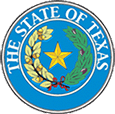For many years in Dallas/Fort Worth, we have mild winters and rarely need heat. Then there are the years we have ice storms. Since the weather in North Texas is so unpredictable, the last thing you want to discover on a cold January day is cold air coming from your furnace. Some of the issues are minor, but others require professional help from Efficient Home Solutions. While we love to see our customers, we’d rather you get preventive maintenance than have to call us for an emergency. Let’s talk about some typical problems and how you can avoid them.
Maybe the Problem Isn’t With the Furnace
Sometimes there’s an issue with another part of your system, even as simple as your thermostats. They tell your furnace about your home’s temperature needs, so if they don’t communicate the right information then it could blow cold air. Your ducts could also be the culprit if they have leaks. This allows heat energy to escape, so even if the air is warm, it’ll be a lot cooler once it reaches your living areas. A complimentary energy audit by Efficient Home Solutions can check for these types of trouble before they become severe.
Or Maybe it IS the Furnace
There are many possible issues that can arise in the furnace itself to cause cold air. One of the most basic is a problem with the electronic control panel. Sometimes that’s an easy fix – the same one the help desk tells you about your computer: turn it off, wait a minute, and turn it back on. If that doesn’t help, you probably need to call a professional. Another reason cold air might happen is that your pilot light is out. Like the control panel, you can try turning it off (be sure to wait a good 10-15 minutes to make sure any escaped gas dissipates!) and then turning it back on. If that doesn’t work, or if the pilot light goes out frequently, then it’s time to call in the experts.
Is there standing water around the furnace? A high-efficiency unit produces condensation, which should exit the system via the condensate drain line. However, if that line has a blockage, the overflow kill switch will turn off the unit in order to prevent water damage. Condensate line blockage will result in standing water.
Finally, have you checked the furnace air filter lately? Just like any filter, it needs to be changed regularly or air movement throughout the furnace will be hindered. That causes temperatures inside the furnace to increase, risking a shutdown of heating cycles by the limit switch.
An Ounce of Prevention
We’re used to only rarely thinking about our heating systems, but it’s worth checking yours to make sure everything is working properly before you get a cold air surprise. Remember, a free home energy audit by Efficient Home Solutions can spot potential problems before they happen.
If you do get that Arctic blast, use some of the tips above to see if it’s an easy fix. If you’re still getting frozen out, contact us and we’ll come to save the day!





